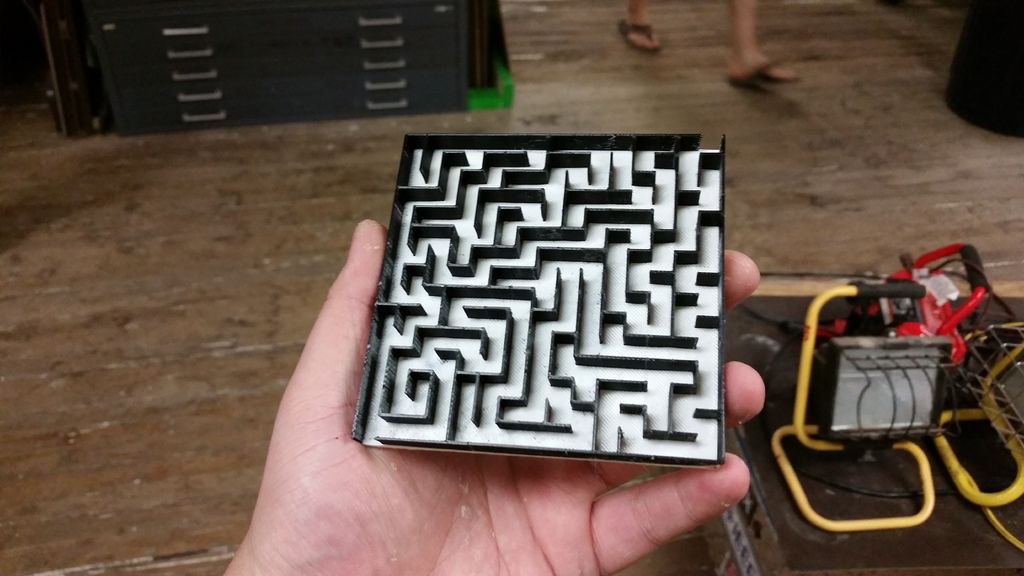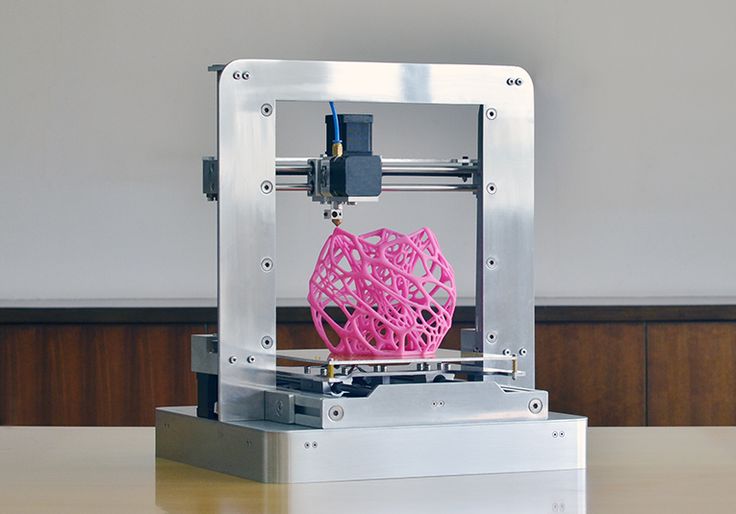Adidas shoes 3d printed
DATA-DRIVEN 3D PRINTED PERFORMANCE TECHNOLOGY DESIGNED TO MOVE YOU FORWARD
Today we are unveiling the next step in data driven 3D printed midsole innovation, the adidas 4DFWD. Combining years of athlete data with the unique technology of 3D printing, adidas 4DFWD is created to provide runners with an all-new running experience.
For over four years, we have developed 4D lattice midsole technology in partnership with Carbon. Combining athlete data and Carbon’s Digital Light SynthesisTM technology to produce precision tuned 3D printed midsoles. adidas 4D footwear is amongst the first in the world to use this cutting-edge technology which offers the ability to fine tune midsoles to specific patterns of movement, so that athletes can enjoy precision performance with every step.
Born from this process is the new adidas 4DFWD lattice midsole. Identified from one of five million possible lattice structures and made of 40% bio-based material, the bowtie-shaped FWD CELL has been specifically coded to compress forward upon vertical impact. When compared to previous generations of 4D midsole, adidas 4DFWD generates three times as much forward motion under vertical loading in mechanical testing conditions. As a result, peak braking force experienced by the athlete during running is reduced by 15% as the midsole redirects these vertical impact forces into horizontal forward motion – delivering running economy comparable to that of Ultraboost midsoles in lab conditions.
adidas 4DFWD was tested through a range of bio-mechanical testing procedures at the University of Calgary, which analysed specific areas such as forward motion, braking force and running economy. The concept was also tested extensively with adidas runners local to the creation team in Germany and a carefully selected cohort of high-level running creators across the USA.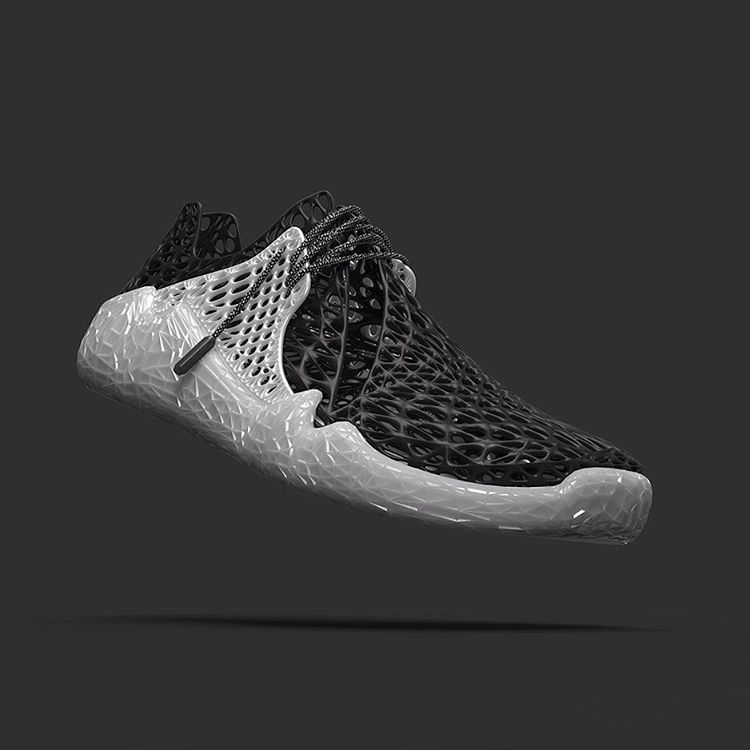 Furthermore, cutting edge cognitive perception testing was carried out at Arizona State University.
Furthermore, cutting edge cognitive perception testing was carried out at Arizona State University.
4D technology provides us with the opportunity to design in a way that conventional foam midsoles do not allow. We took inspiration from the first generation 4D lattice midsole and set ourselves the challenge to take it to the next level. Coding millions of potential lattice structures to see if we could specifically design to counter negative mechanical forces experienced during running.
Working closely with Carbon, our product teams, and testers we identified one perfect lattice midsole that is designed to compress forwards under loading and counter mechanical forces whilst delivering a unique gliding sensation for our runners.
Sam Handy, VP Design, adidas Running
Complementing the adidas 4DFWD midsole is a new PRIMEKNIT upper made from recycled polyester. Providing runners with a super-lightweight premium upper that encases the foot in a seamless sock-like fit. Historical mapping data has been used to code the PRIMEKNIT upper to perfectly align with the unique properties of the 4DFWD midsole. Helping to give runners all the support and comfort they need whilst on their run.
Historical mapping data has been used to code the PRIMEKNIT upper to perfectly align with the unique properties of the 4DFWD midsole. Helping to give runners all the support and comfort they need whilst on their run.
At adidas, we’re always looking to combine athlete insights with new and innovative technologies to create the best performance running products. With this approach, we aim to serve and to delight different runners with diverse experiences depending on their needs, being it to run faster, or to achieve personal goals, or to run for longer, or to feel more comfort, always bringing new valuable benefit that runners can feel.
This industry first midsole innovation positions adidas 4DFWD as our most advanced digitally printed running midsole yet and showcases the potential of 4D technology in turning physics and bio-mechanic studies into performance solutions. We cannot wait for runners to feel and experience this new product that will deliver new and exciting sensations.
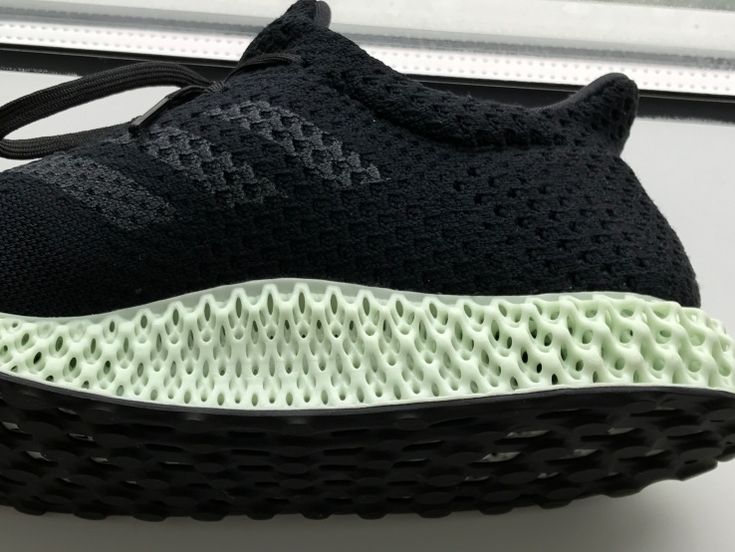
Alberto Uncini Manganelli, SVP and GM adidas Running & Credibility Sports
The adidas 4DFWD will drop in three specific colorways, including a special Tokyo Collection drop, which will be the main podium shoe for athletes in Tokyo this summer. Launching first in a black and fluorescent orange colorway, the adidas 4DFWD will be available to Creators Club members on May 15th. The Tokyo Collection colorway will be available from July 1st, before a worldwide drop from August 12th.
To find out more, please visit: www.adidas.com/4d. Follow the conversation on Instagram, Facebook and Twitter using #adidas4DFWD and @adidasrunning.
adidas Futurecraft: 3D-Printed Personalized Shoe
Imagine walking into an adidas store, running briefly on a treadmill, and instantly getting a 3D-printed shoe — this is the ambition of the adidas 3D-printed midsole. By creating a flexible, fully breathable carbon copy of the athlete’s own footprint, matching exact contours and pressure points, it sets the athlete up for the best running experience.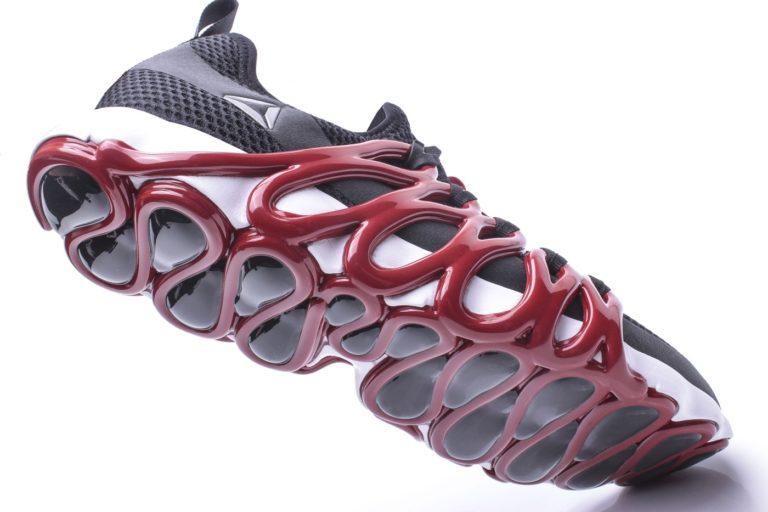 Linked with existing data sourcing and footscan technologies, it opens unique opportunities for immediate in-store fittings.
Linked with existing data sourcing and footscan technologies, it opens unique opportunities for immediate in-store fittings.
“Futurecraft 3D is a prototype and a statement of intent. We have used a one-of-its-kind combination of process and material in an entirely new way,” says Eric Liedtke, Executive Board Member of adidas AG. “Our 3D-printed midsole not only allows us to make a great running shoe but also to use performance data to drive truly bespoke experiences, meeting the needs of any athlete.”
For adidas Futurecraft 3D, Materialise assisted adidas with the generation of a lightweight structure in the 3D-printed midsole that would keep the shoe at a comfortable weight. Materialise’s design and engineering team worked with Materialise 3-matic to create the structure, improving the midsoles’ flexibility without compromising on rigidness and strength.
The midsoles were then laser sintered in TPU, the first durable, fully flexible 3D printing material to be used in a consumer product, through Materialise’s certified manufacturing process. Additive manufacturing automation and control software Materialise Streamics provided an overview of the entire production process, ensuring the traceability and repeatability that is crucial to the manufacturing of end-use consumer products.
Additive manufacturing automation and control software Materialise Streamics provided an overview of the entire production process, ensuring the traceability and repeatability that is crucial to the manufacturing of end-use consumer products.
— Paul Gaudio, Creative Director, adidas
“Working on this project with adidas has been a great opportunity for Materialise’s certified manufacturing process,” says Haritz Elexpuru, who coordinated the collaboration from Materialise’s side. “From software to rapid prototyping to manufacturing — all of Materialise’s strengths have played their part for Futurecraft.”
A 3D-printed Futurecraft sign in front of 3D printing powder
Next steps: the Futurecraft series
The Futurecraft 3D story is the first chapter of the adidas Futurecraft series, which demonstrates the brand’s commitment to innovating throughout all areas of production.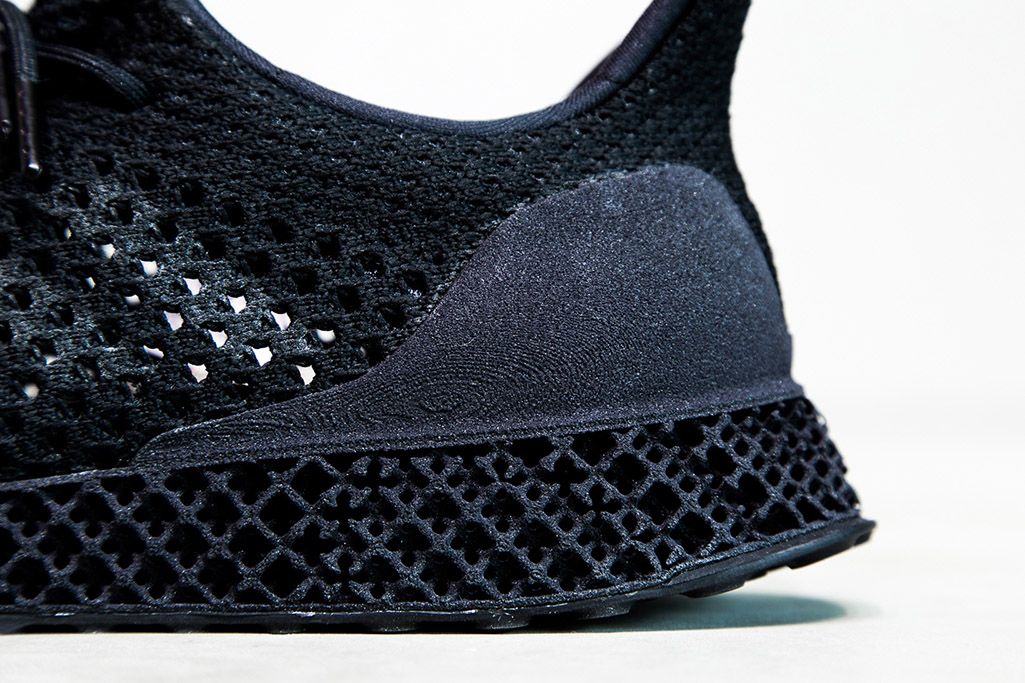
“Futurecraft is our sandbox. It is how we challenge ourselves every day to explore the boundaries of our craft,” says Paul Gaudio, Creative Director at adidas. “Driving material and process innovation, bringing the familiar into the future. Marrying the qualities of handcrafting and prototyping with the limitless potential of new manufacturing technologies. Futurecraft is stripped back — fast, raw, and real — it is our approach to design.”
True to what adidas terms as the Futurecraft vision of creative collaboration, Futurecraft 3D is made possible through an open-source partnership between adidas and Materialise. Keep an ear to the ground for announcements from the Futurecraft initiative, heralding more groundbreaking design innovations.
what is available on the market today?
In August 2020, the research company SmarTech Analysis presented its second study of the 3D printing and footwear market. According to the report, this industry is expected to generate over $8 billion in profit by 2030.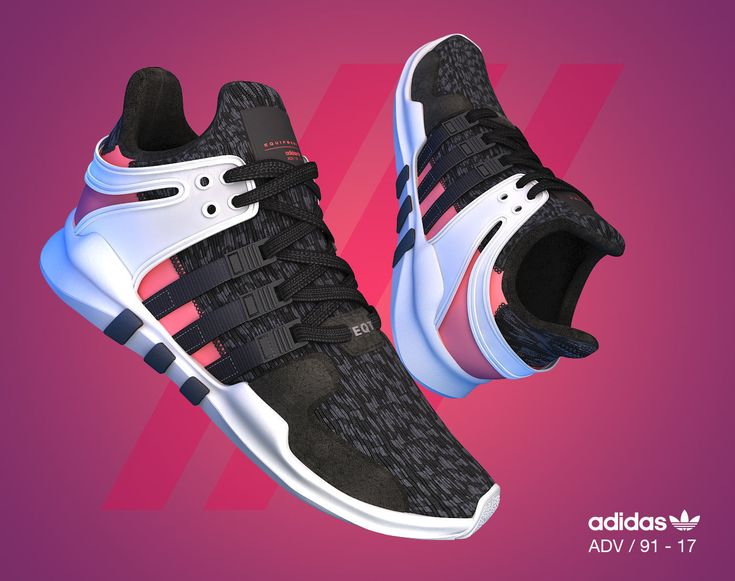 And it must be said that additive manufacturing offers a number of advantages in the production of shoes, the most important of which is the ability to customize the final product. Consumers are looking for difference and uniqueness, and 3D technology can fill that need. They can also offer custom made products with intricate designs perfectly tailored to each individual's morphology. Thus, through 3D scanning and 3D printing, companies create more efficient sneakers, futuristic high fashion shoes, or comfortable and durable soles. Yes, it should be noted that not all shoes are always 3D printed, which is actually quite rare, but, for example, the upper or sole. In any case, 3D printing and shoes go hand in hand and the market is definitely showing great promise! For that reason, we wanted to introduce you to some of the most impressive 3D printed running shoes currently available, whether for sports, the beach, or just for work.
And it must be said that additive manufacturing offers a number of advantages in the production of shoes, the most important of which is the ability to customize the final product. Consumers are looking for difference and uniqueness, and 3D technology can fill that need. They can also offer custom made products with intricate designs perfectly tailored to each individual's morphology. Thus, through 3D scanning and 3D printing, companies create more efficient sneakers, futuristic high fashion shoes, or comfortable and durable soles. Yes, it should be noted that not all shoes are always 3D printed, which is actually quite rare, but, for example, the upper or sole. In any case, 3D printing and shoes go hand in hand and the market is definitely showing great promise! For that reason, we wanted to introduce you to some of the most impressive 3D printed running shoes currently available, whether for sports, the beach, or just for work.
3D Printed Adidas Shoe Range
When it comes to 3D printed shoes, it would be remiss not to mention the offerings from famed shoe manufacturer adidas.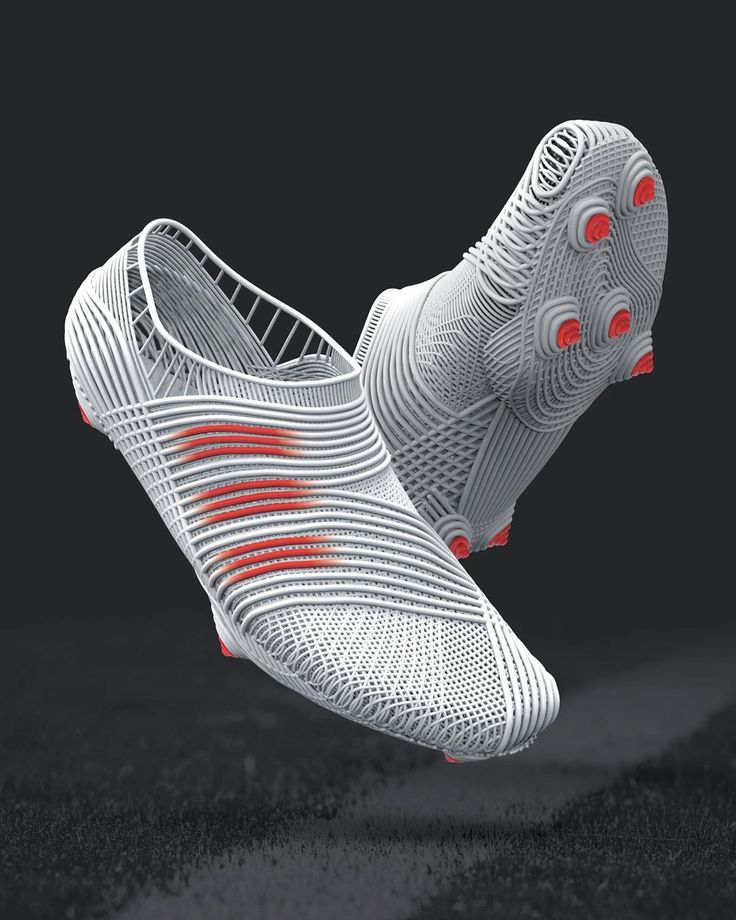 The company has been using 3D printing since 2017, when it partnered with Carbon to create the new Futurecraft 4D shoe, , which is still on sale today. Since then, the company has continued to use additive manufacturing to create unique sustainable footwear. For example, just last year, the company launched two new 3D printed running shoes, the 4D Fusion and the adidas 4DFWD, the latter specifically designed to improve performance. According to the company, 3D printing increases productivity with the lattice structure, as well as increasing flexibility, from reducing lead times to offering reasonably priced shoes that can be fully customized.
The company has been using 3D printing since 2017, when it partnered with Carbon to create the new Futurecraft 4D shoe, , which is still on sale today. Since then, the company has continued to use additive manufacturing to create unique sustainable footwear. For example, just last year, the company launched two new 3D printed running shoes, the 4D Fusion and the adidas 4DFWD, the latter specifically designed to improve performance. According to the company, 3D printing increases productivity with the lattice structure, as well as increasing flexibility, from reducing lead times to offering reasonably priced shoes that can be fully customized.
With Carbon DLS technology, the adidas 4DFWD shoes feature a unique 40% bio-based lattice midsole (adidas photo).
Liquid Speed from Reebok
Reebok is one of the largest and most well-known brands in the footwear industry. That's why, a few years ago, the company decided to use additive manufacturing to create soles for one of its athletic shoe collections.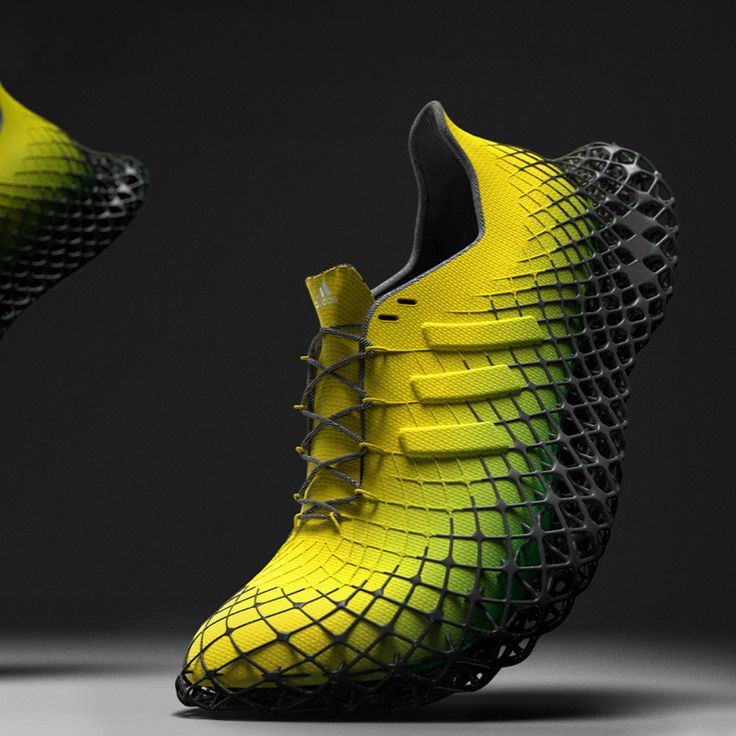 While the rest of the shoe was made using traditional methods, the Liquid Speed has the ultimate outsole. Reebok partnered with chemical company BASF, which used a liquid polyurethane material. A programmed robot was used to create successive layers. In addition to better performance and durability, Liquid Speed has a very original design.
While the rest of the shoe was made using traditional methods, the Liquid Speed has the ultimate outsole. Reebok partnered with chemical company BASF, which used a liquid polyurethane material. A programmed robot was used to create successive layers. In addition to better performance and durability, Liquid Speed has a very original design.
Liquid Speed design is original.
New Balance includes 3D midsole
In the same vein, New Balance is partnering with 3D Systems to develop 3D printed midsoles. DuraForm Flex is an SLS insole made from a thermoplastic elastomer material. They combine strength and flexibility and provide maximum comfort for sports shoes. 3D printing technology allows the production of complex designs that optimize cushioning and make shoes lighter. The American brand is working with Formlabs and its stereolithography technology to develop the Triple Cell platform to produce the FuelCell Echo.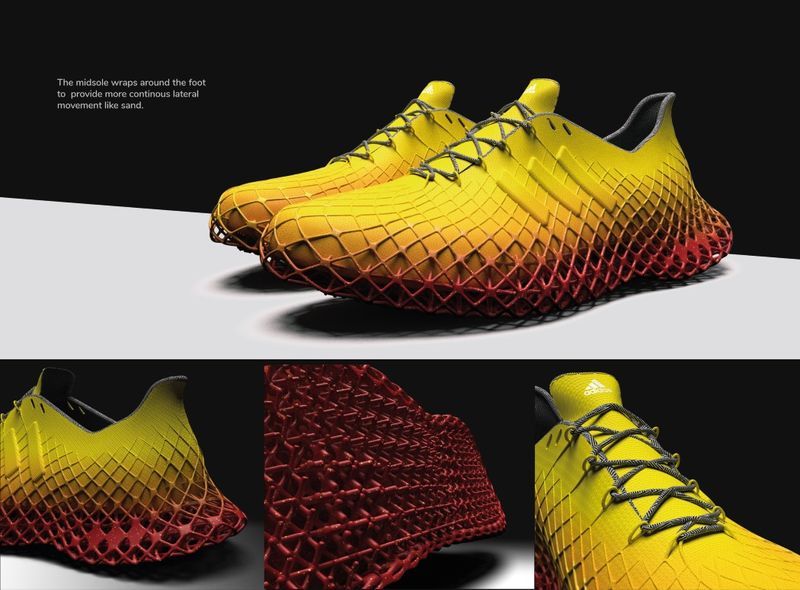
The sole of the sneaker was 3D printed.
ECCO and its customizable insoles
ECCO is a Danish footwear manufacturer with many years of experience in the industry. In 2019, the company launched the Quant-U service aimed at customizing shoes using 3D printing. Using the 3D foot scanning process, it is possible to determine the orthopedic fit required for each individual. With this device, ECCO develops 3D printed insoles tailored to the needs of its customers. This part is made of silicone, a material that provides stability as well as a sufficient degree of cushioning. In addition, the company says the insoles are easy to replace and machine washable.
Photo Credit: ECCO Quant-U
Wiivv meets customer
Wiivv is a young Canadian company that specializes in the production of 3D printed soles and flip flops that are fully adapted to the wearer's morphology.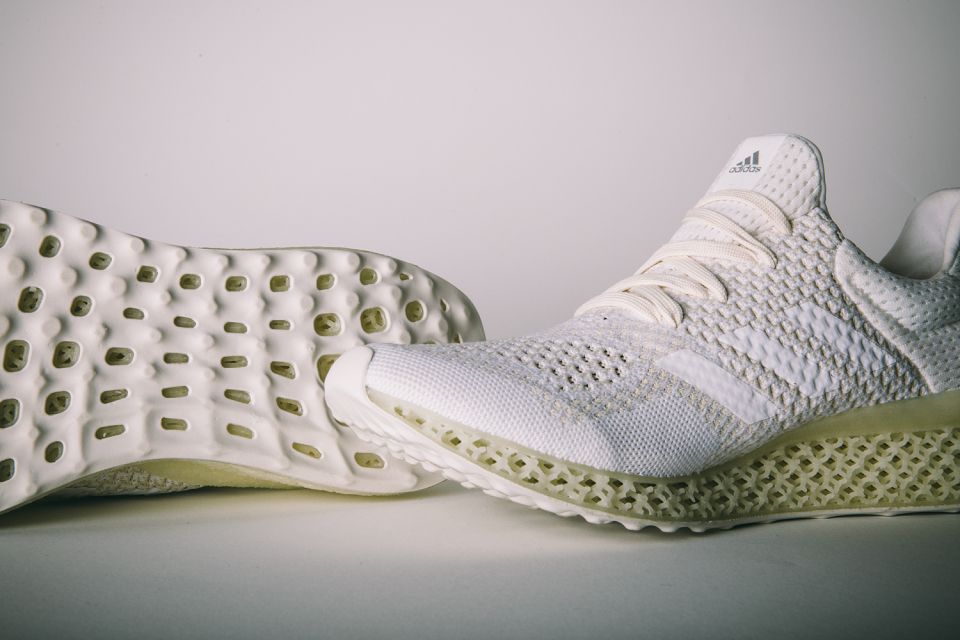 Thanks to the smartphone app, the user can directly scan their foot, send their data to the company and receive a customized solution in a few weeks. Take flip-flops, for example: Wiivv can use 3D printing to personalize certain elements of the shoe, such as straps or a vertical strap. The goal, of course, is to offer the user more comfort. The company is equipped with a machine park in San Diego, and products are manufactured using SLS technology.
Thanks to the smartphone app, the user can directly scan their foot, send their data to the company and receive a customized solution in a few weeks. Take flip-flops, for example: Wiivv can use 3D printing to personalize certain elements of the shoe, such as straps or a vertical strap. The goal, of course, is to offer the user more comfort. The company is equipped with a machine park in San Diego, and products are manufactured using SLS technology.
Wiivv Fully Customizable Slippers
3D printed sustainable shoes
How best to combine fashionable shoes with a responsible approach to the environment? With additive manufacturing! Chris Margetts, founder of The Sole Theory and fashion brand Humans Are Vain, uses recycled textiles to make his 3D printed shoes. He explains: “There is a lot of demand for more sustainable products. There is no doubt that there will be consumers who will want to buy these shoes when we launch them on the market. ” He intentionally uses fibers from clothes he once loved to make composite materials. Thus, they can be used as a 3D printing material to create new shoes. The fibers are shredded and turned into filament for the ZYYX Labs 3D printer.
” He intentionally uses fibers from clothes he once loved to make composite materials. Thus, they can be used as a 3D printing material to create new shoes. The fibers are shredded and turned into filament for the ZYYX Labs 3D printer.
Photo Credits: The Only Theory
HERON01 fully 3D printed sneakers
Attention sneaker lovers, the 3D printed HERON01 is sure to please the public. This shoe was completely made by additive manufacturing by the American company Heron Preston, named after its founder Heron Preston Johnson. For this model, the founder of Heron01 paid special attention to the theme of sustainability, since no glue or toxic materials were used in the production process. We also managed to do without the use of seams, which means that shoes can be completely recycled. The scraps and scraps can eventually be used to make a new product. A design idea that goes beyond traditional shoemaking is also reflected in the shoe's features: low ankle cutouts, printed scales and textures, and a bird's foot pattern on the sole.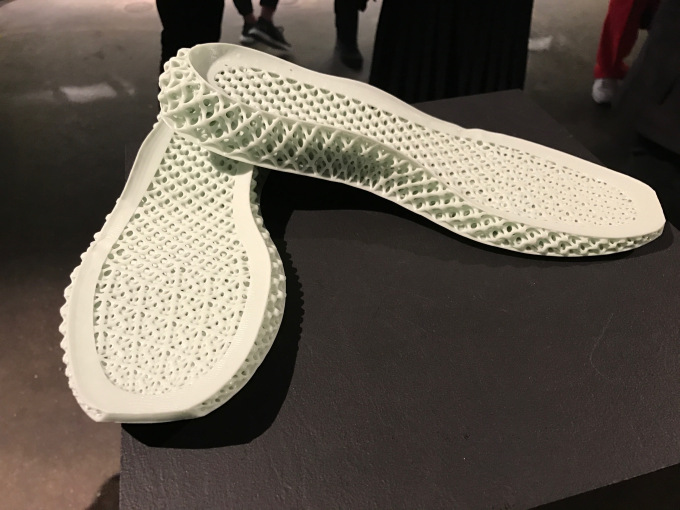
Sneakers HERON01 (photo HERON01)
Natives shoes and 3D printed shoes
Canadian manufacturer Native Shoes launched the Liquid Printed Natives project with the goal of designing everyday items using advanced techniques such as additive manufacturing. As part of this, the company used liquid rubber to 3D print shoes. The manufacturer says it has used 50% recycled ethylene vinyl acetate (EVA) material to achieve more flexibility and a more stretchy appearance. What stands out about the Native Shoes project is the speed of production: the company explains that 3D technology has significantly reduced production time compared to traditional methods. They also offer consumers a high level of customization.
The shoes will be 3D printed directly in a tray containing a reusable water-based viscous gel formula.
Eco sandals
We continue this trend of 3D printed sandals with the Organic collection, designed by young fashion design student Lucy Treitnarova.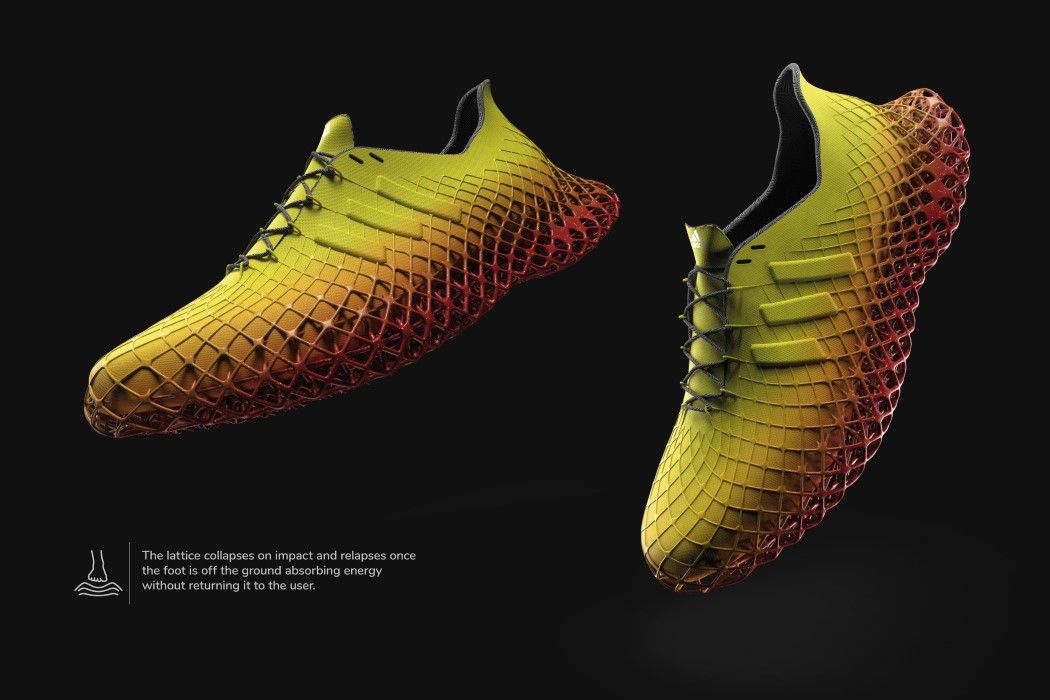 In collaboration with materials manufacturer Fillamentum, she 3D printed the outsole of the sandal, onto which she sewed several organic fabrics made from fibers extracted from pineapple or coconut leaves. The printed outsole needed to be strong enough to withstand this fabric, so Lucy opted for TPU, which is flexible enough yet resistant to abrasion and wear. It also has the ability to be recycled, which is a key ingredient for a young woman.
In collaboration with materials manufacturer Fillamentum, she 3D printed the outsole of the sandal, onto which she sewed several organic fabrics made from fibers extracted from pineapple or coconut leaves. The printed outsole needed to be strong enough to withstand this fabric, so Lucy opted for TPU, which is flexible enough yet resistant to abrasion and wear. It also has the ability to be recycled, which is a key ingredient for a young woman.
Mycelium shoes, futuristic shoes
Created by design studio Ica and Kostika, the pair of Mycelium sneakers is completely 3D printed on an SLS machine. Pretty impressive in shape, size and design, it does not go unnoticed on the street - besides, only 5 pairs were created. Its designers claim that these 3D printed shoes are very comfortable because they are fully adapted to the human foot: a 3D file is created from the scanned data.
Only 5 pairs were created
Hilos 3D Printed Eco Shoes
Portland-based startup Hilos was founded in 2019 and wants to change the way shoes are made by combining technology and craft.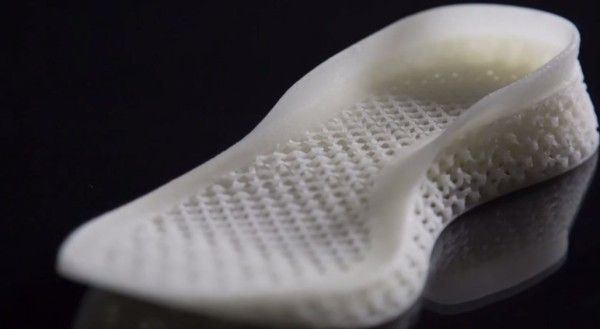 Through additive manufacturing, the company hopes to solve environmental problems while producing quality shoes. Made from selective laser sintering of TPU, these recyclable shoes are known for their flexibility and durability. The company admits that with the help of 3D printing, it can bring new product lines to market in as little as two weeks, while the industry average takes 12 to 15 months.
Through additive manufacturing, the company hopes to solve environmental problems while producing quality shoes. Made from selective laser sintering of TPU, these recyclable shoes are known for their flexibility and durability. The company admits that with the help of 3D printing, it can bring new product lines to market in as little as two weeks, while the industry average takes 12 to 15 months.
ATHOS 3D printed climbing shoes
The ATHOS climbing shoes, developed by a group of students in Barcelona, are becoming more and more popular. This type of shoe, also known as "climbing shoes", must fit the athlete's foot perfectly to improve traction and prevent slipping. Usually, to make sure they fit well, athletes wear climbing shoes that are smaller than the size of the foot, which causes pain and deformity of the foot. That's why the ATHOS team wanted to create bespoke mountaineering shoes that would meet the needs of every climber. For this, HP MultiJet Fusion 3D printing technology and BASF TPU material were used.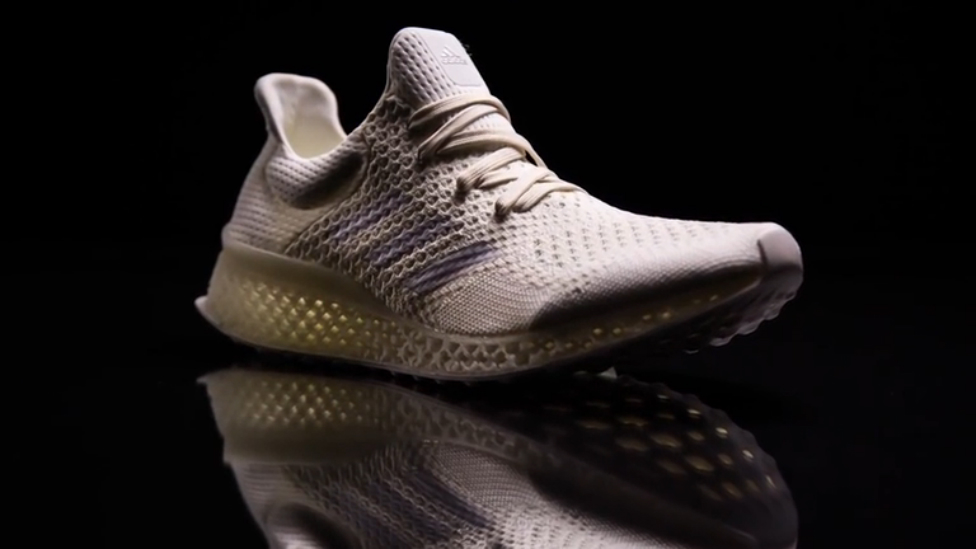 The process of getting ATHOS shoes is very simple: just scan your feet with 3 photos, customize the shoes to your liking and once you get them home you can start climbing!
The process of getting ATHOS shoes is very simple: just scan your feet with 3 photos, customize the shoes to your liking and once you get them home you can start climbing!
Photo: ATHOS
Pleko Carbon Fiber Running Shoe
The brainchild of Italian middle distance runner Miro Buroni and Diadora, the Pleko shoe is made up of many 3D printed components. The 3D printed parts include the insole, outsole, studs and ribs. Designed from composite materials, carbon fiber to be exact, and through a powder sintering process, these various elements have made it possible to produce a shoe that is flexible, resistant to wear and, above all, customizable. Indeed, thanks to 3D scanning and race simulation software, shoe designers can offer athletes a reliable and comfortable solution.
Photo : CRP technology
3D Printed Dance Shoes
The Purmundus Challenge 2021 was won by start-up company Act'ble, which collaborated with top athletes to develop new pointe shoes.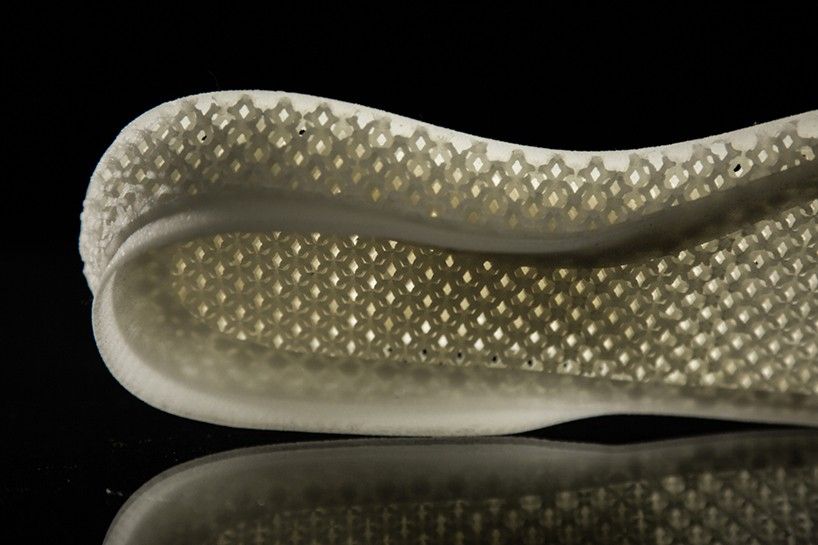 Designed for classical ballet and contemporary dance, the shoe is called the New Pointe Shoe Sole. These shoes are expected to last five times longer than traditional pointe shoes. It was designed to greatly reduce the physical pain that dancers experience during ballet. To make the shoes, the team 3D-printed the sole, but didn't specify what process or materials they used.
Designed for classical ballet and contemporary dance, the shoe is called the New Pointe Shoe Sole. These shoes are expected to last five times longer than traditional pointe shoes. It was designed to greatly reduce the physical pain that dancers experience during ballet. To make the shoes, the team 3D-printed the sole, but didn't specify what process or materials they used.
Photo: Act'ble
Parametriks Print 001, shoes printed entirely in one material
Earlier this year, designer Nathan Smith unveiled the Parametriks Print 001, a 3D printed shoe using parametric design. This method, using design and material science to develop details, has resulted in shoes that stand out from the crowd for their comfort. According to Nathan Smith, he used Grasshopper, a plug-in included with the Rhinoceros 3D modeling software, to design Parametriks Print 001. In terms of shoe production, the designer explains that he relied on SLA machines and used TPU.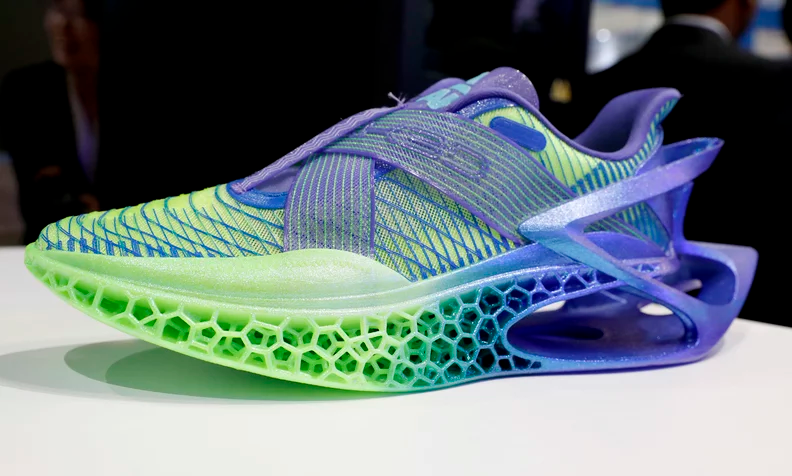
Photo: Parametriks
Source
SmarTech Analysis, 3D printed shoes, 3D printing, Carbon DLS technology, adidas 4DFWD sneakers, Reebok, 3D technology, 3D scanning, 3D Systems, SLS technology, 3D foot scanning, 3D printed soles
Adidas announces new sneakers with 3D printed soles
News
Follow author
Follow
Don't want
2
Adidas is preparing to launch another batch of 3D printed sneakers, this time with a slightly modified Alphaedge 4D model. The shoes are equipped with soles printed on Carbon high-speed photopolymer 3D printers.
The original version has been updated with an upper that is closer in style to the Alphabounce running shoe. But the sole, like on other 3D-printed sneakers of the German brand, has the same intricate shock-absorbing structure that increases “jumping”.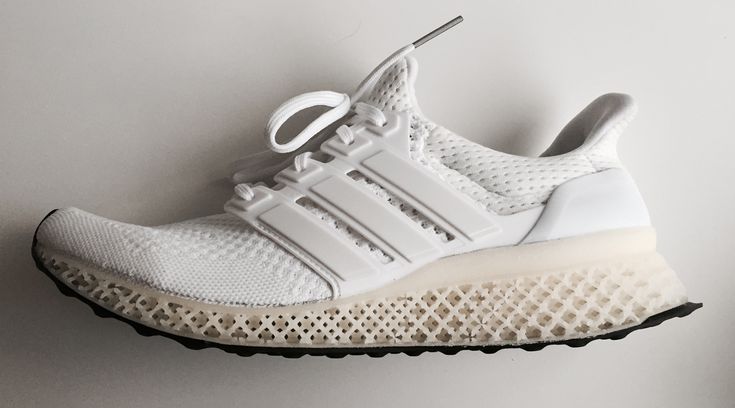 The fourth dimension in the title refers to the physical data of users, since initially the sneakers were planned to be made customizable. Standard injection molding is not suitable for these soles, which is why Adidas relies on Carbon's high-performance stereolithographic 3D printers.
The fourth dimension in the title refers to the physical data of users, since initially the sneakers were planned to be made customizable. Standard injection molding is not suitable for these soles, which is why Adidas relies on Carbon's high-performance stereolithographic 3D printers.
Adidas plans to create a network of robotic factories with an increase in the additive production of shoes to half a million pairs per year. Over the past few years, the company has released limited editions of the first, yet-to-be-produced 3D printed Futurecraft 3D sneakers, then added a mass-produced 3D printed 3D Runner to retail, and even rewarded Rio Olympic medalists with customized Triple Black Futurecraft sneakers. decorated with gold, silver and bronze heels.
In 2017, a pair of now collectible Futurecraft 3D sneakers of the first series ( in the illustration above ) went under the hammer at a Berlin auction for ten thousand dollars with an original price of $600.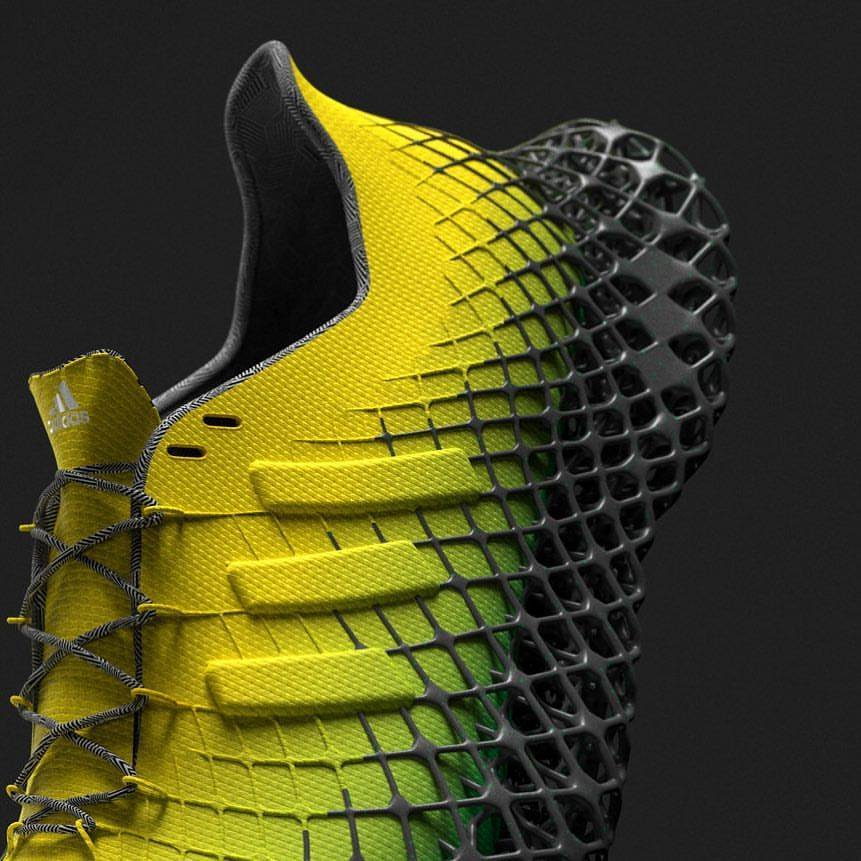 The cost of new shoes is estimated at $300 per pair. The start of sales is scheduled for May 31.
The cost of new shoes is estimated at $300 per pair. The start of sales is scheduled for May 31.
Do you have interesting news? Share your developments with us, and we will tell the whole world about them! We are waiting for your ideas at [email protected].
Follow author
Follow
Don't want
2
Article comments
More interesting articles
6
Follow the author
Follow
Don't want
The German startup Xolo, founded by scientists from the Brandenburg University of Applied Sciences, received a...
Read more
4
Subscribe to the author
Subscribe
Don't want
UEC-Klimov, St.


